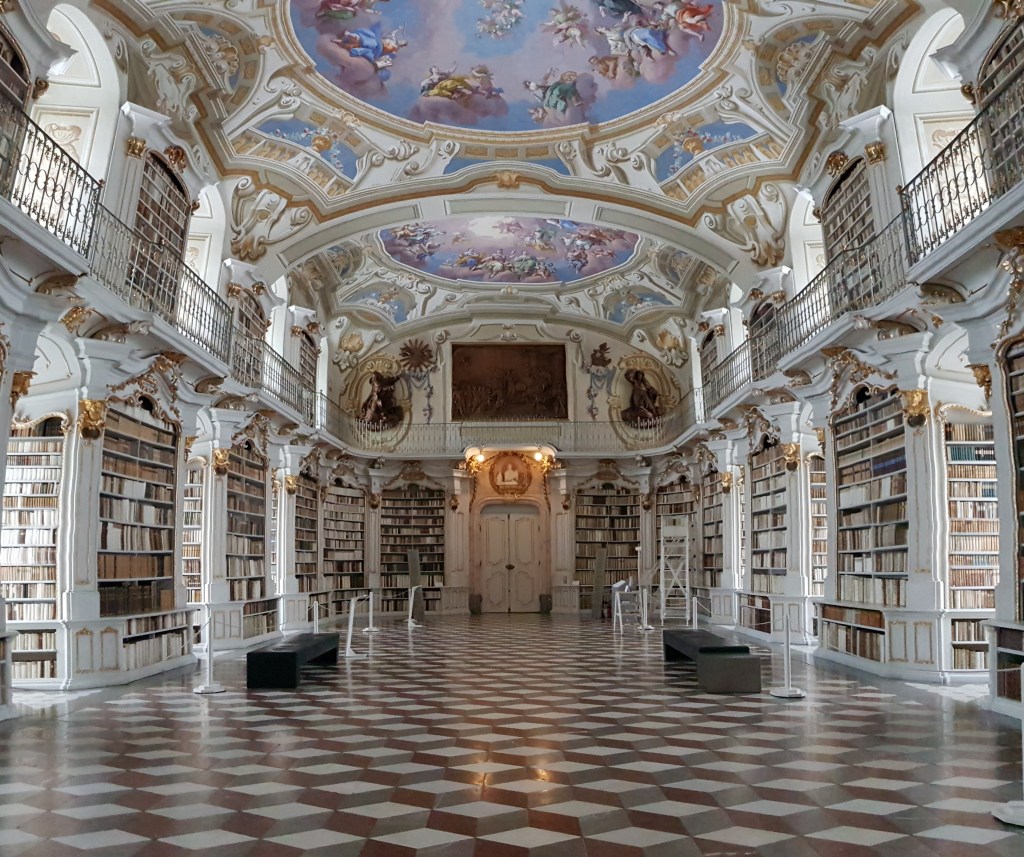I’ve been doing a little research on the Abbey overnight and have a game plan for this morning, focussing on the library, its crowning glory. With day tours coming from Vienna, I’m intent on seeing it with as few people about as possible. Consequently, we’re virtually first in line when the doors open, zooming upstairs, past all other displays, straight into the library.
And, oh! Dear readers, it’s truly magnificent. A baroque masterpiece.
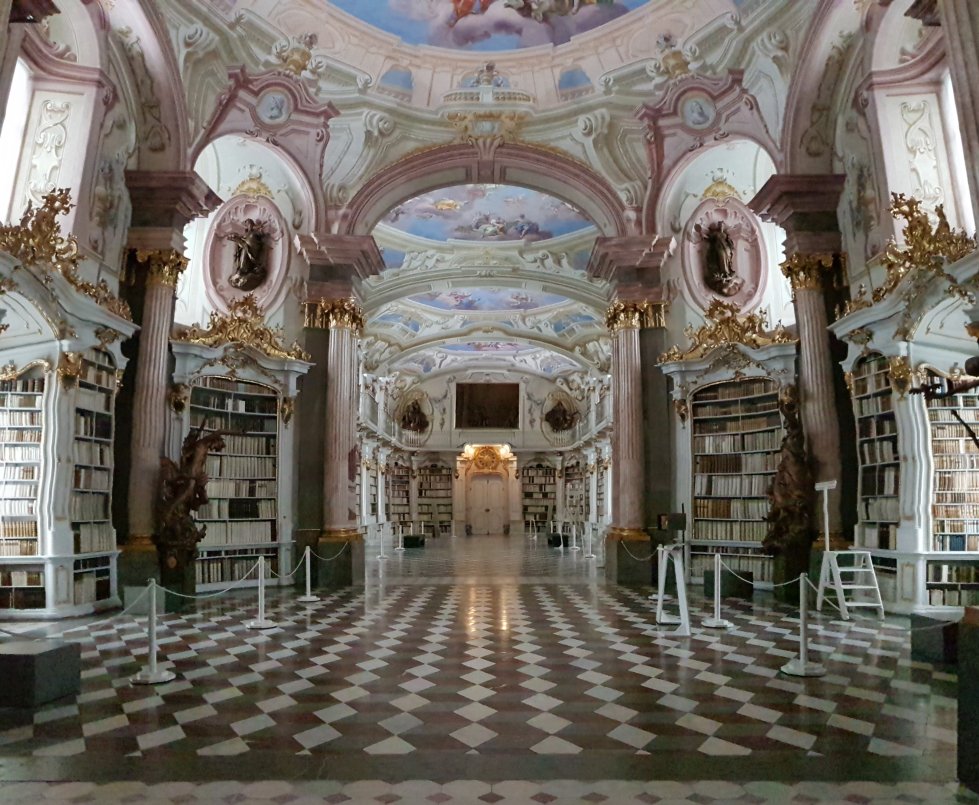
Built during the Age of Enlightenment under the guidance of architect Josef Hueber, work was completed in 1776. Across three rooms are seven domes, each depicting a frescoed aspect of (then) modern enlightenment and learning. Incredibly, the artist who painted the frescoes, Bartholomew Altomonte, was 80 when he commence work on them.
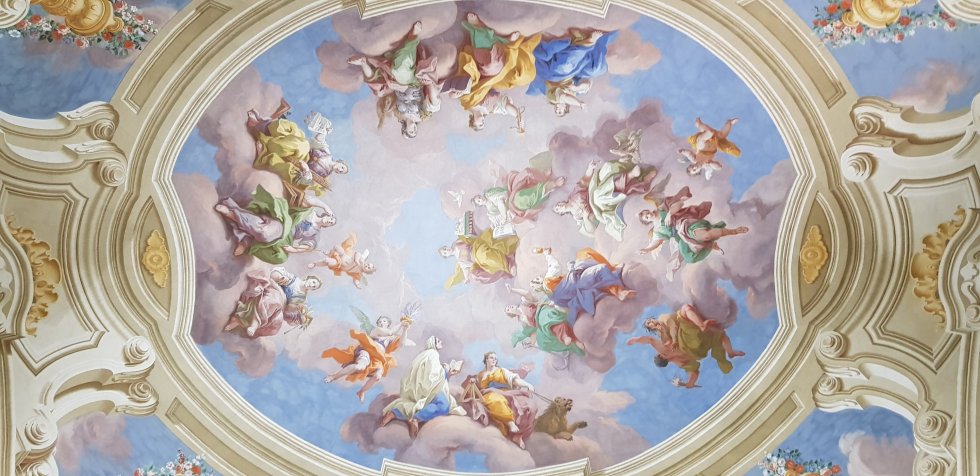
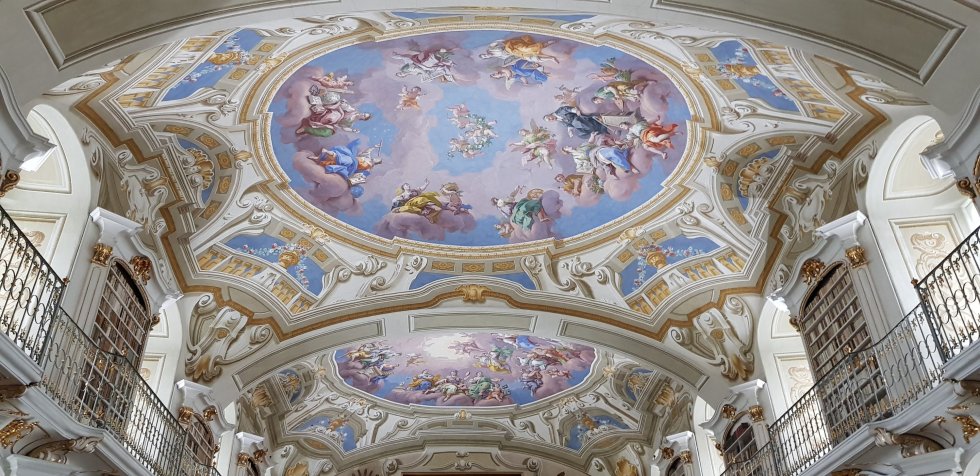
The centre room is anchored by the “Four Last Things” sculptures by Josef Stammel. Representing Death, the Last Judgement, Heaven and Hell – the last things mankind experiences. The floor is marble of different colours creating a 3D effect. Sixty ceiling length windows, flood the room with light.

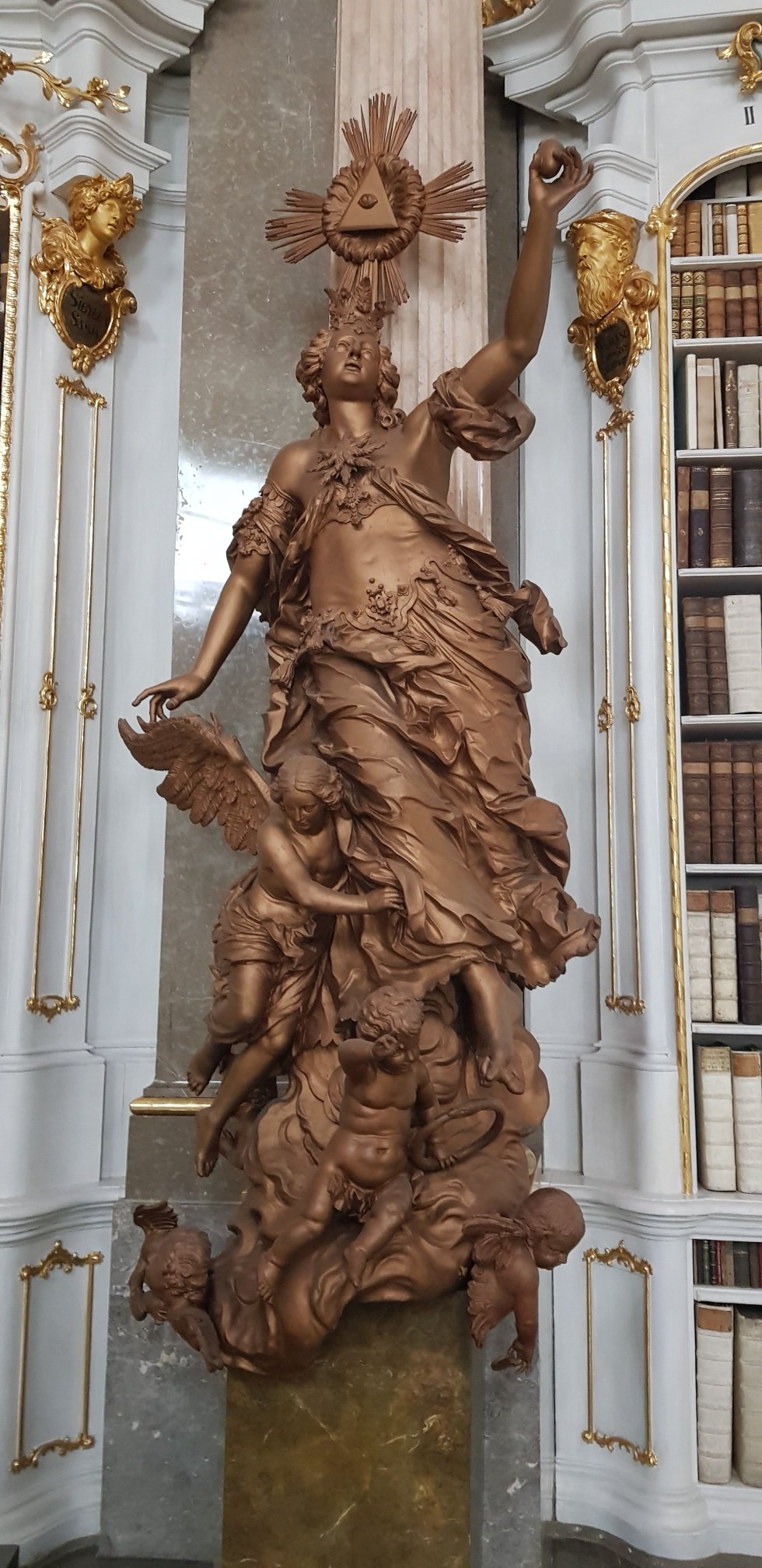
And all that’s before the books! Dating back centuries, hand written originals of some 70,000, catalogued by type across theological study and secular books of science.
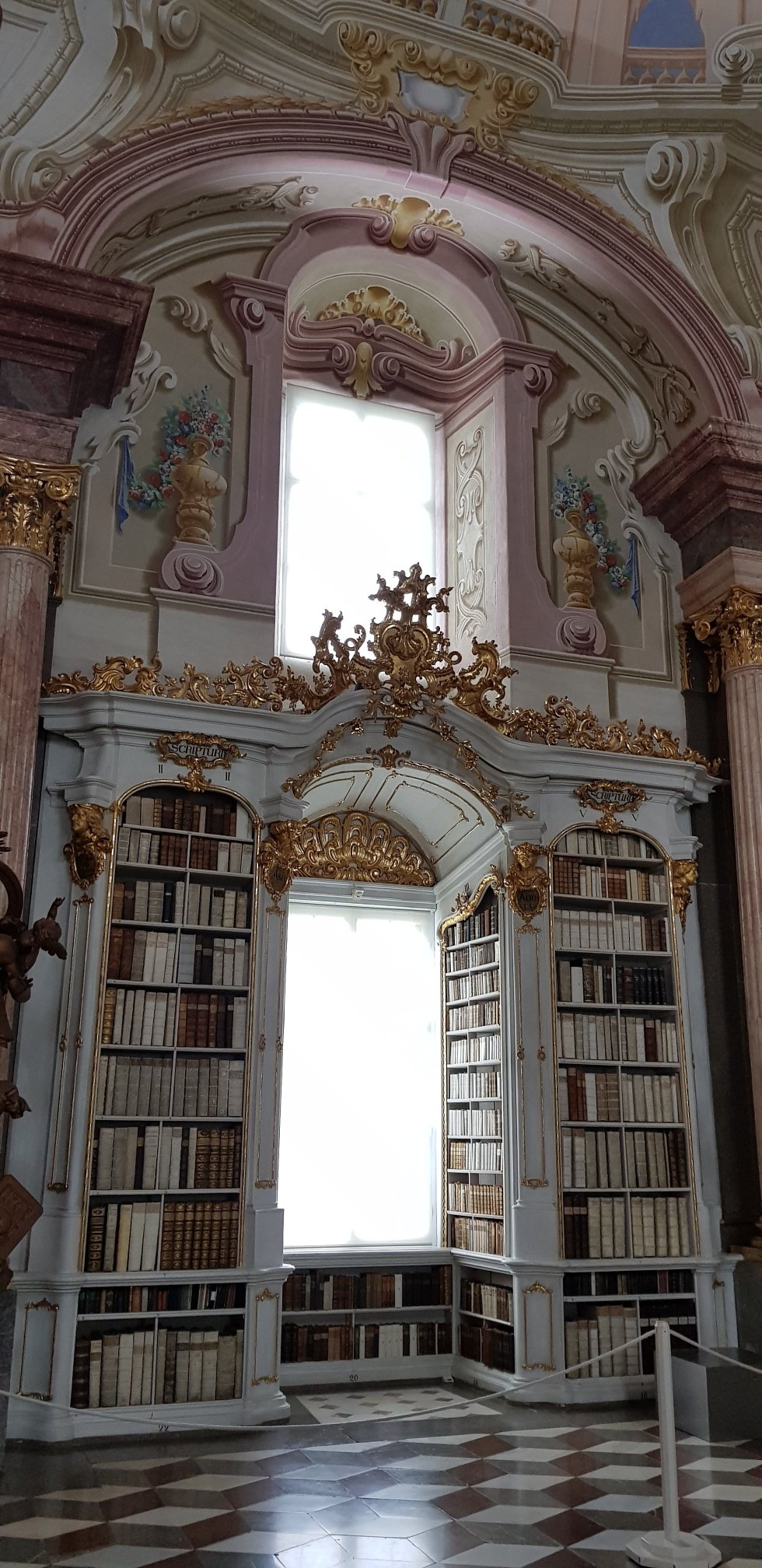
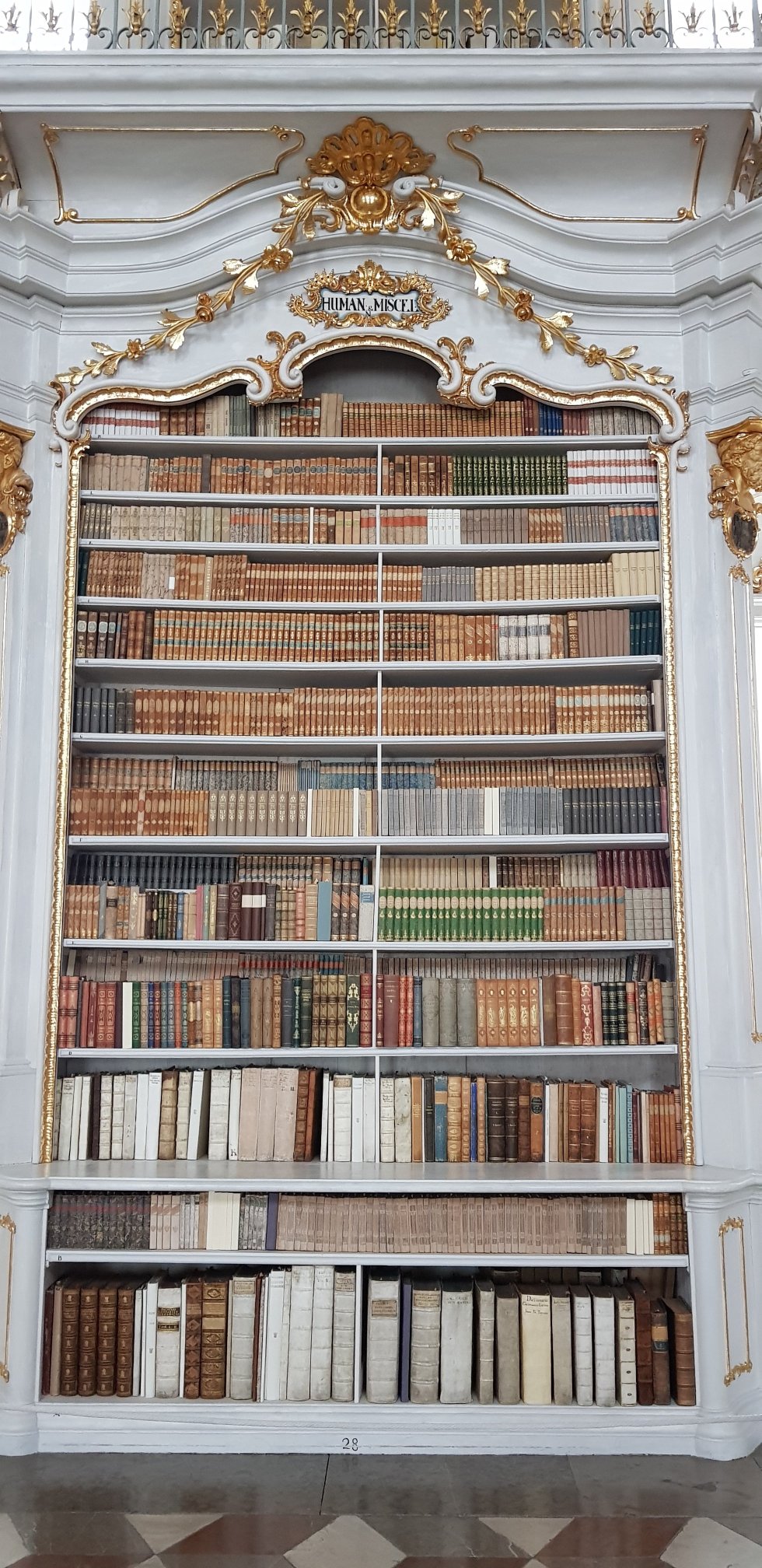
Collectively, the collection and the glorious room they’re housed in have been deemed the eighth wonder of the world. We’re lucky to still have it – the Abbey was razed by fire in the 1800s. The fact that the library was spared was deemed a miracle. It’s by far, the most magnificent library I’ve seen.

There’s one tour group who’s beat us in, but they stand conveniently together in the front, then move together, later, to the rear, leaving me to photographic bliss at either end. They’re the dots in the far distance – to give you an idea of scale.
Himself eventually drags me away, right about the time others start arriving. Besides, there’s so much more to see: there’s the Natural History Museum – cabinet after cabinet of every creature, bird and insect imaginable.
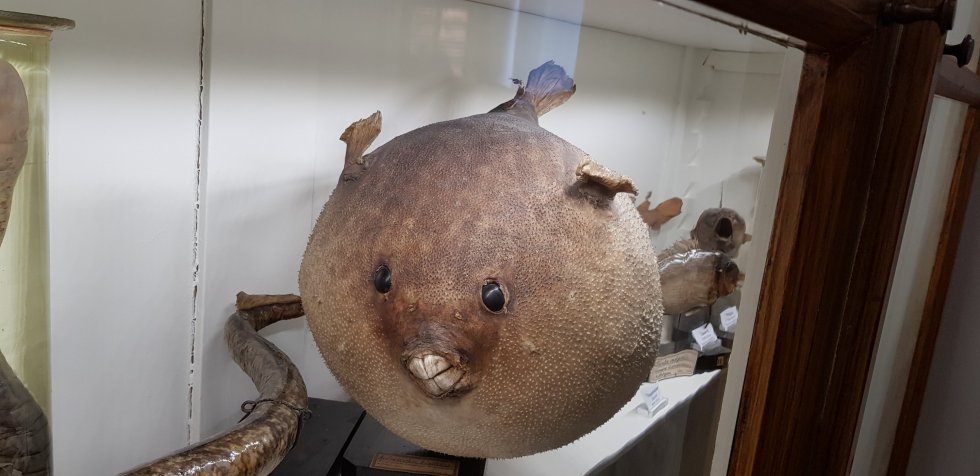


The collection survives thanks to Father Gabriel Strobl, a leading scientist of his time, who worked on restorating it from 1866 to 1906 after the destruction caused by the fire. Although I’m not quite sure what he was thinking, depicting these two in such a private moment for eternity. Hiss, indeed!
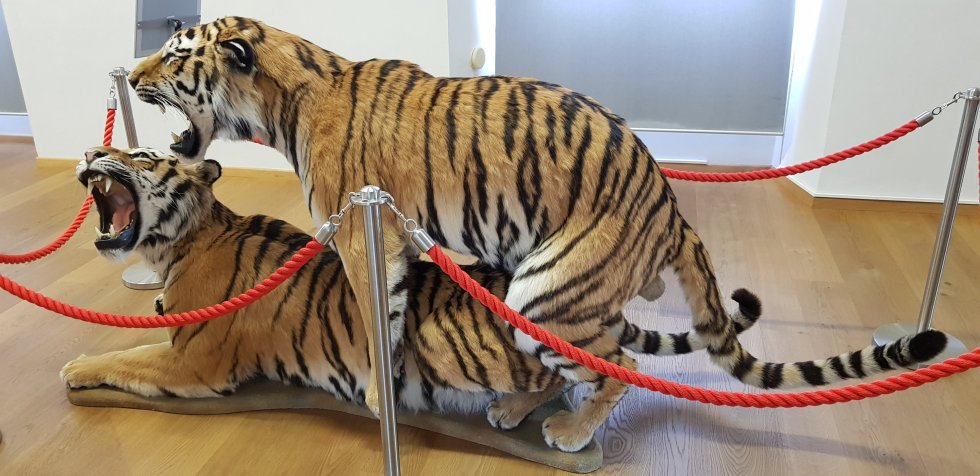
We also tour the Museum of Fine Arts displaying nearly 1,000 years of art from the Romanesque to the Rocco periods. The museum houses paintings, sculpture, liturgical devices, embroidery and glass works. Particularly impressive are the detailed embroidery pieces, some of which took a decade to complete.

There’s also an interesting film about the Abbey’s long history and its financial ups and downs over the centuries. It was on the verge of collapse on a number of occasions – the Business Manager’s role hasn’t changed much over time!
We see a series of ancient manuscripts on vellum, helpfully translated. They speak of Benedictine teachings, ancient texts and poetry but also of legend. Dragons are mentioned in one.
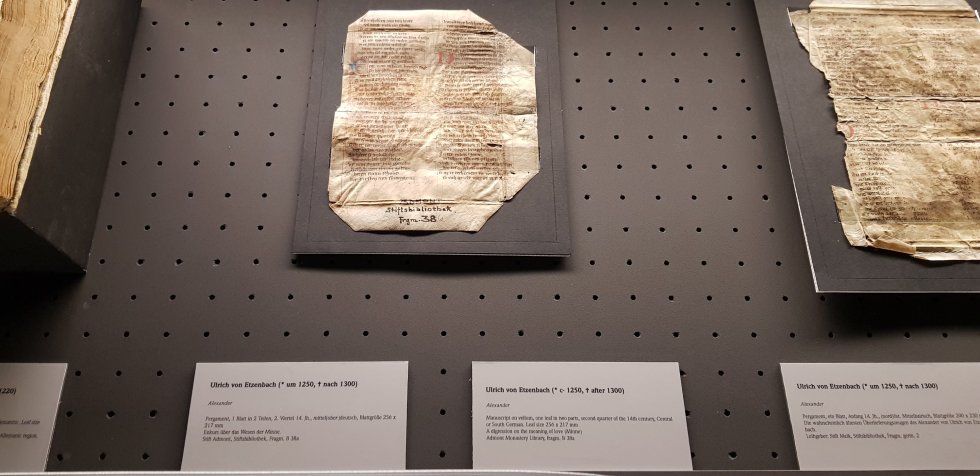

Then there’s the Gothic Museum, one of the leading international displays of gothic art.
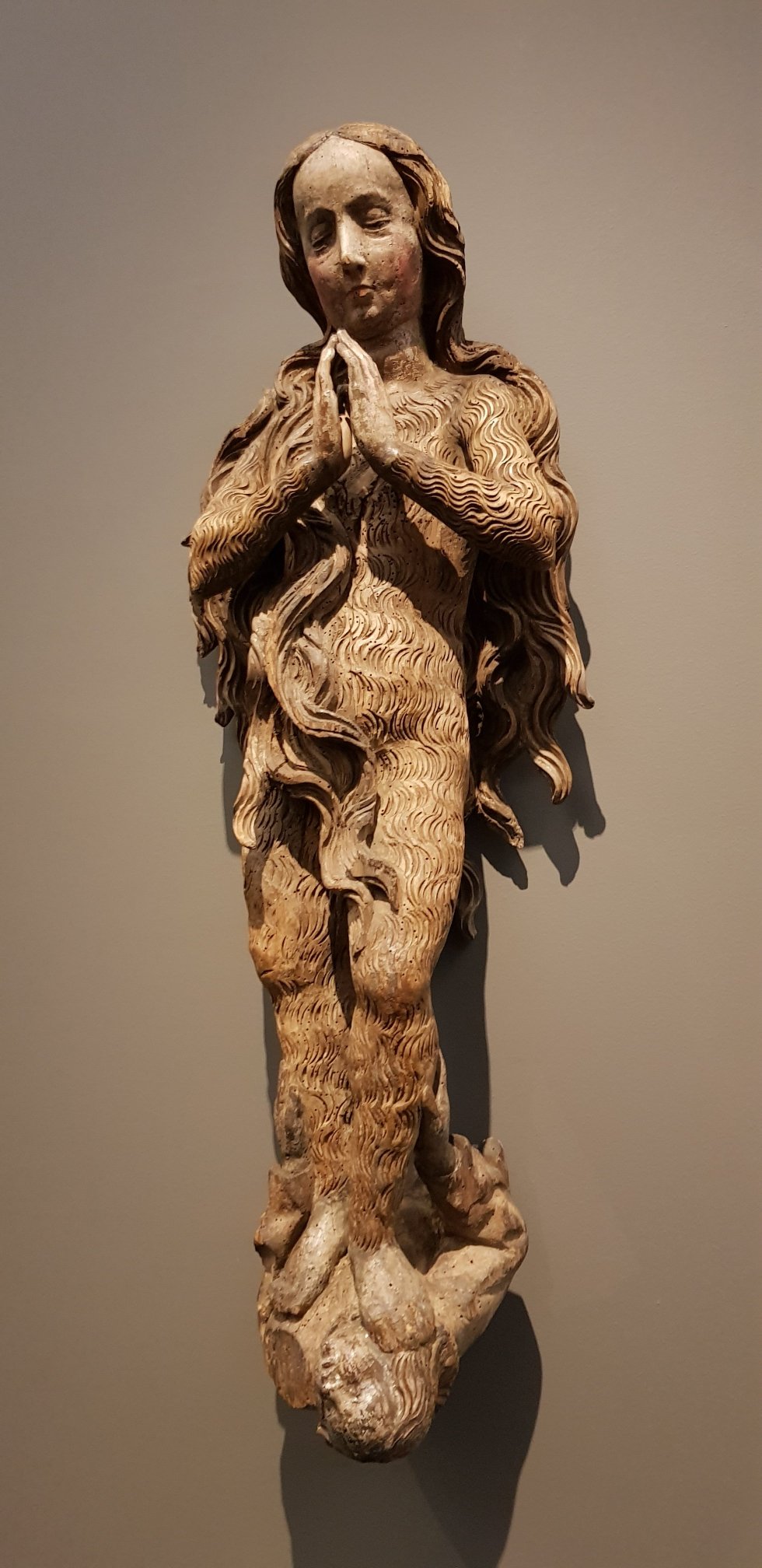
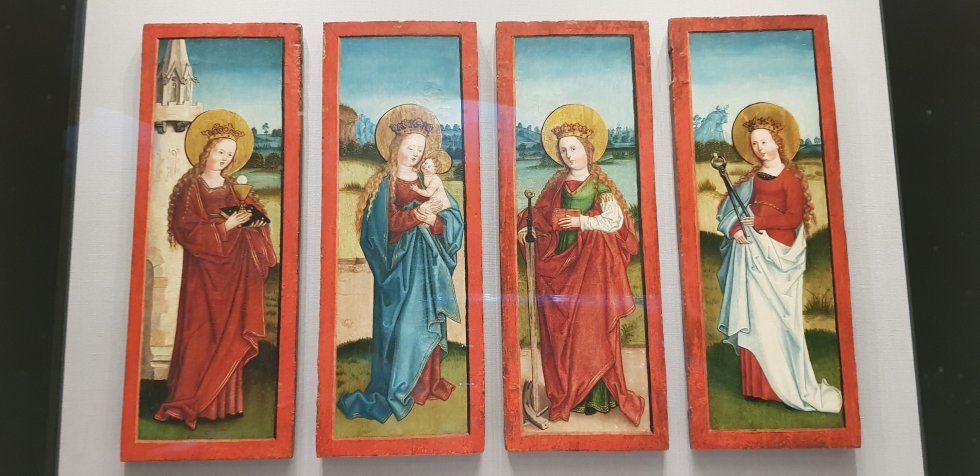
Our last stop is the Abbey itself, fully restored following the 1800s fire.

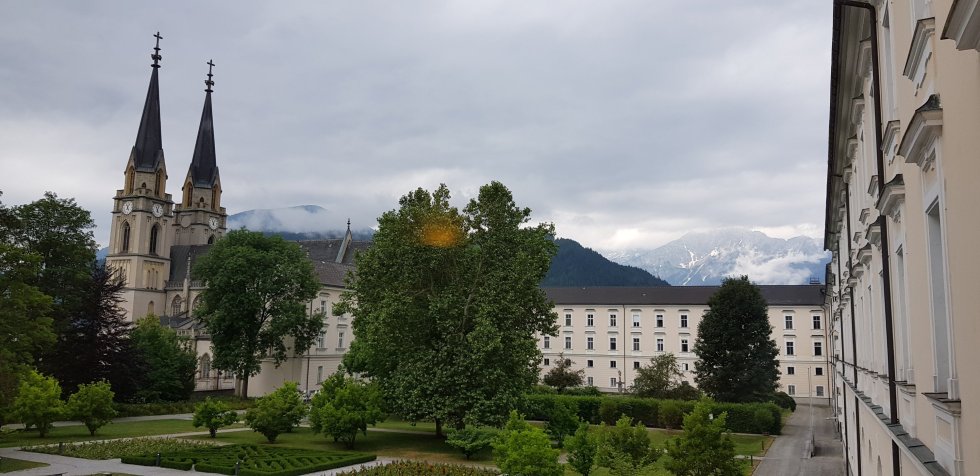
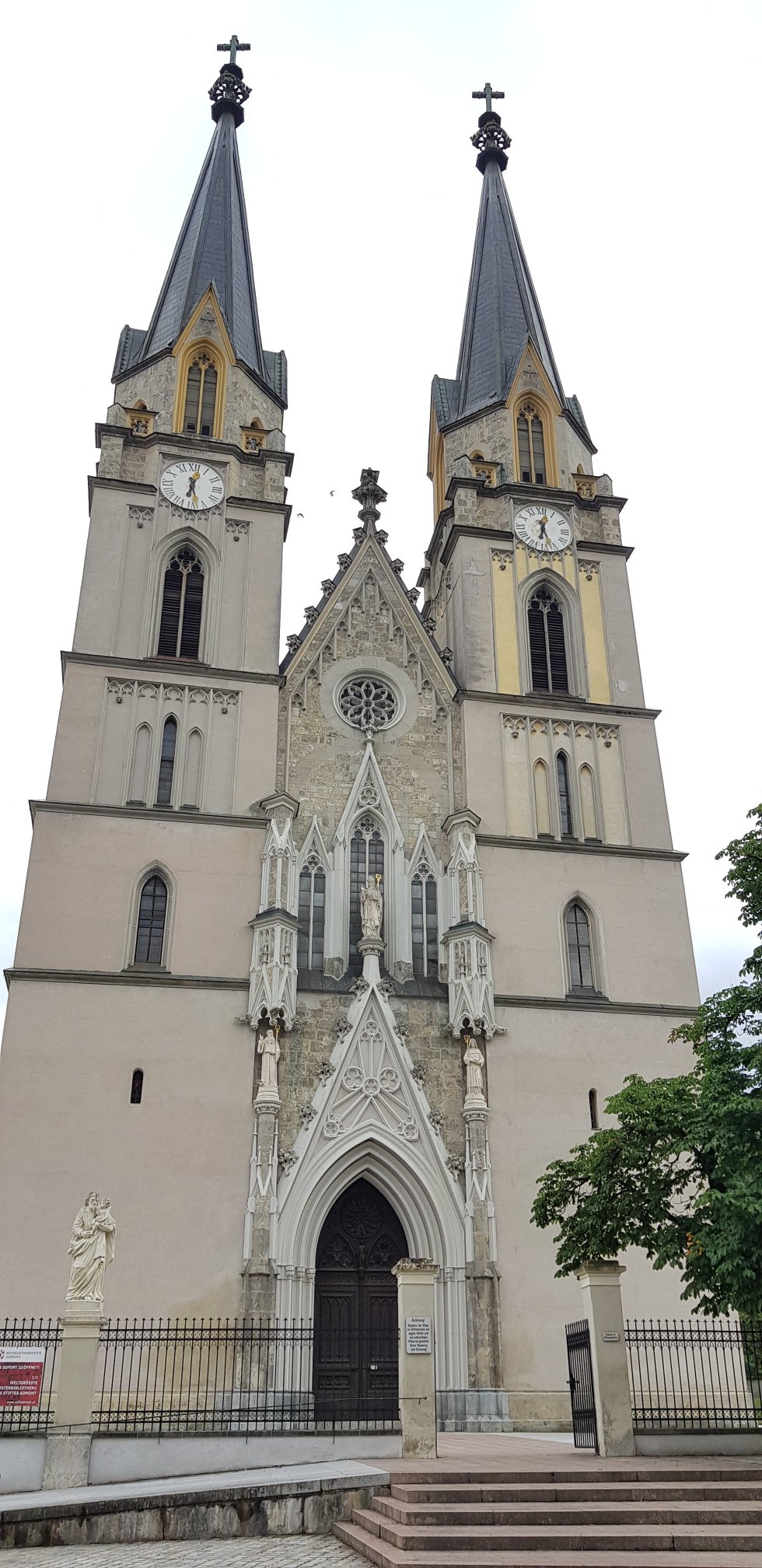
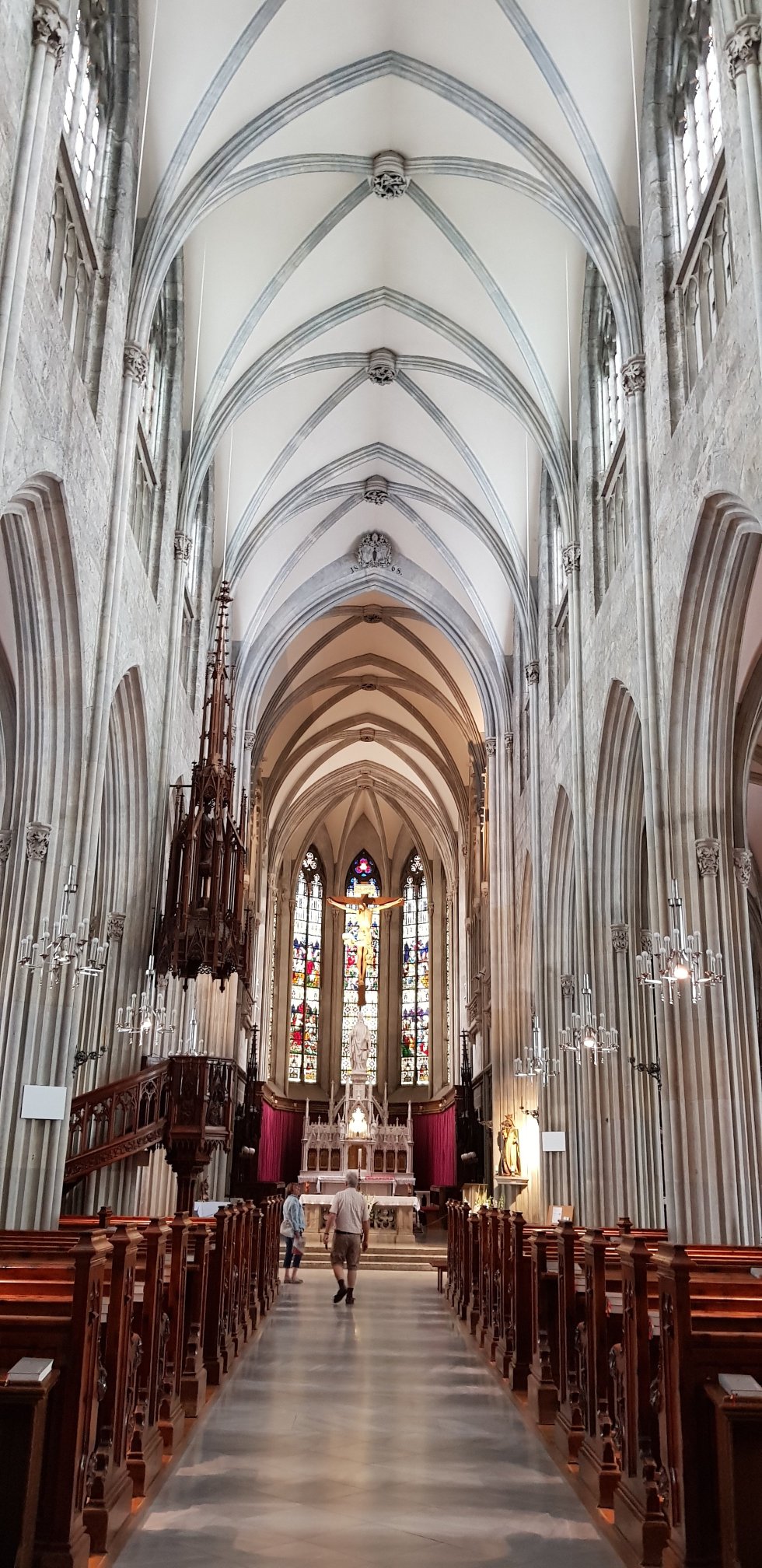
This is truly a remarkable place. With a 945 year history, and 375 years as a school, it’s still a working monastery.
And to think, we were only looking for a place to park! I would have been so disappointed to learn of it later, only to realise we’d missed it.
After a very full morning, Himself has worked up a fine appetite. Just as well – the meals here are huge! Chris’s plate is barely visible under his schnitzel, as is mine – chevapchi (at last!), equally generously garnished with many salads. We just won’t mention all those chips…
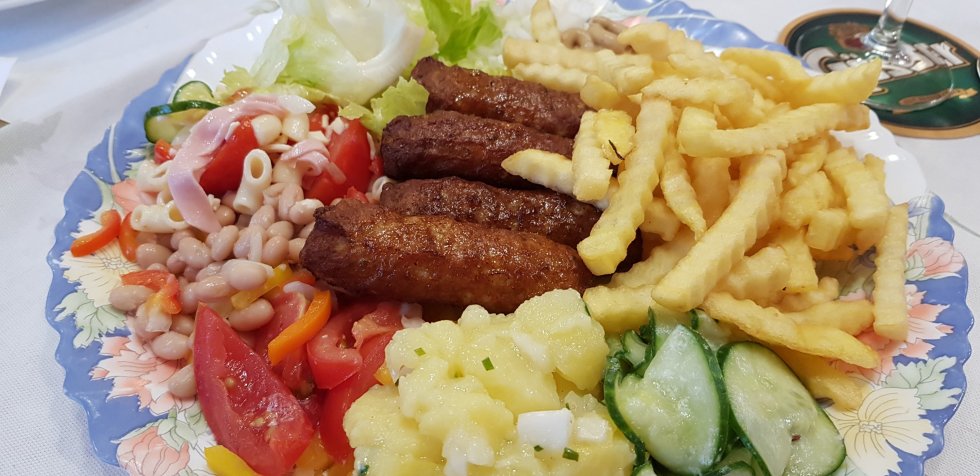
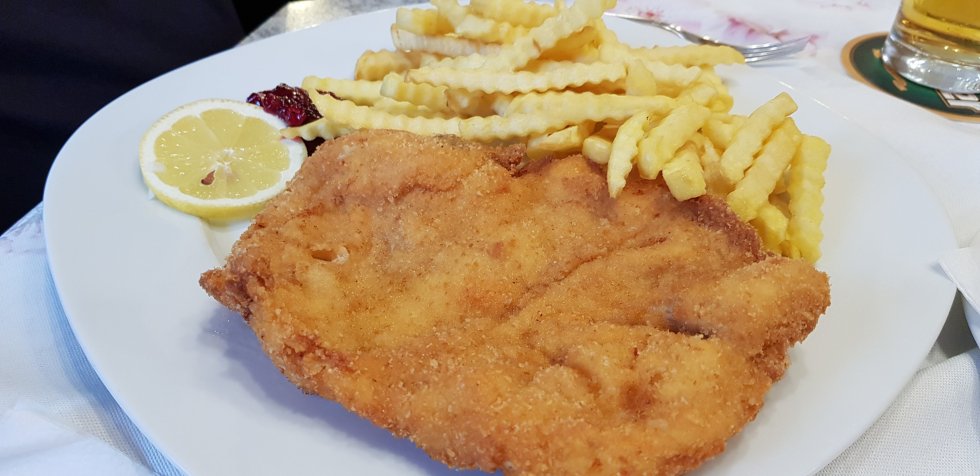
Later, we potter around the village – such a pretty setting with the mountains as a backdrop
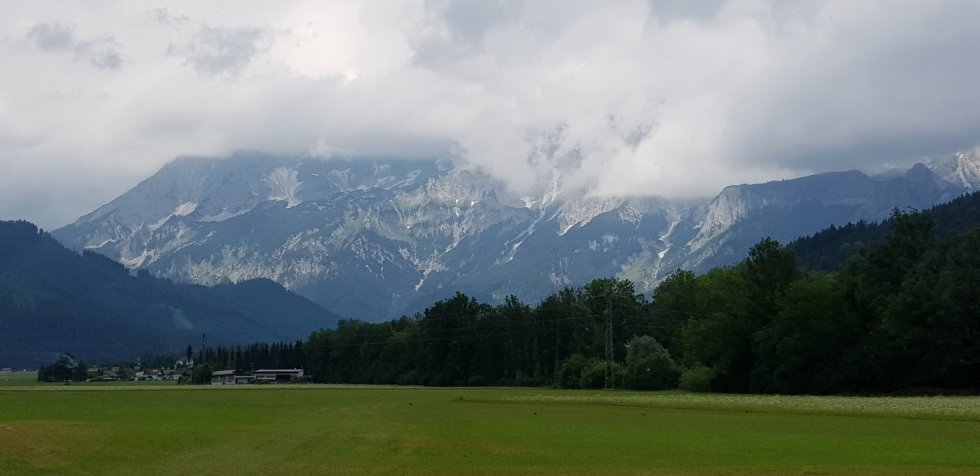
and then take to the road heading further north. We reach the Danube by day’s end, the marking point between upper and lower Austria.
It’s not blue, as popular culture would have you believe, but a pale green.
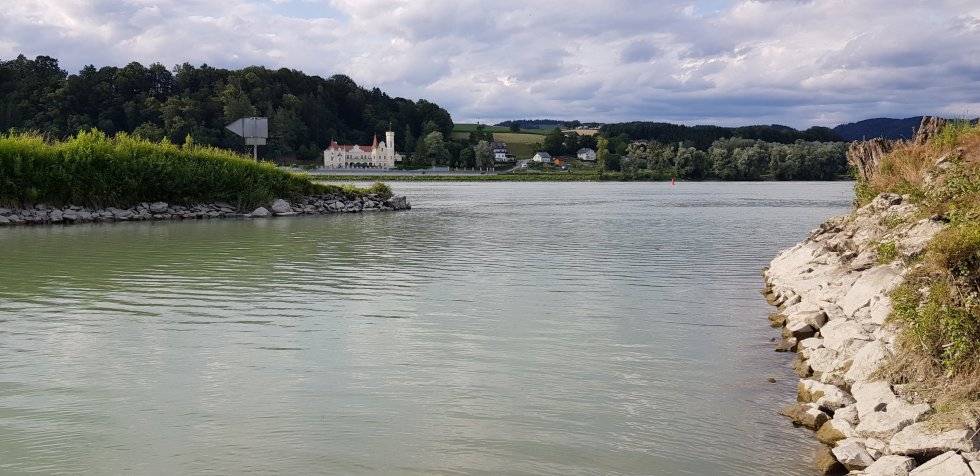
We end the day with a walk along the bank, marvelling at the length and breadth of the Danube. It will be our home for the next few days as we traverse the Austrian wine regions along its waters.

